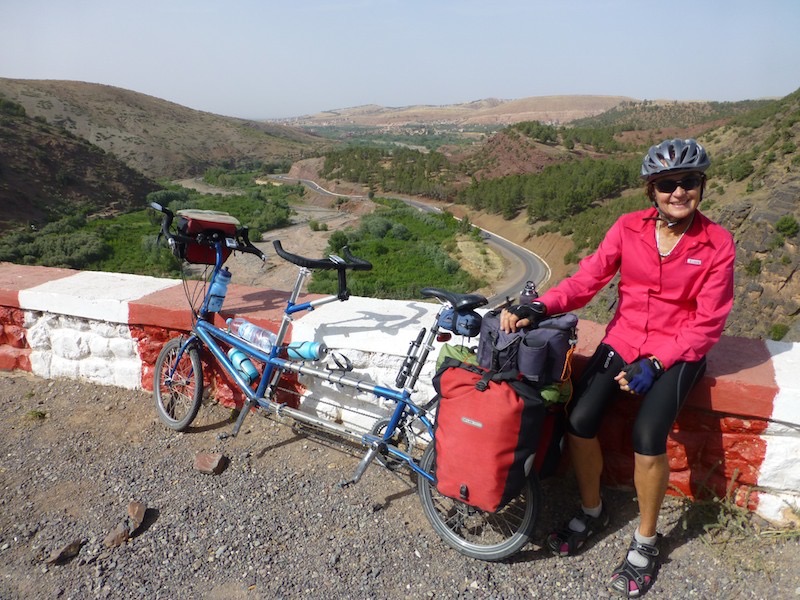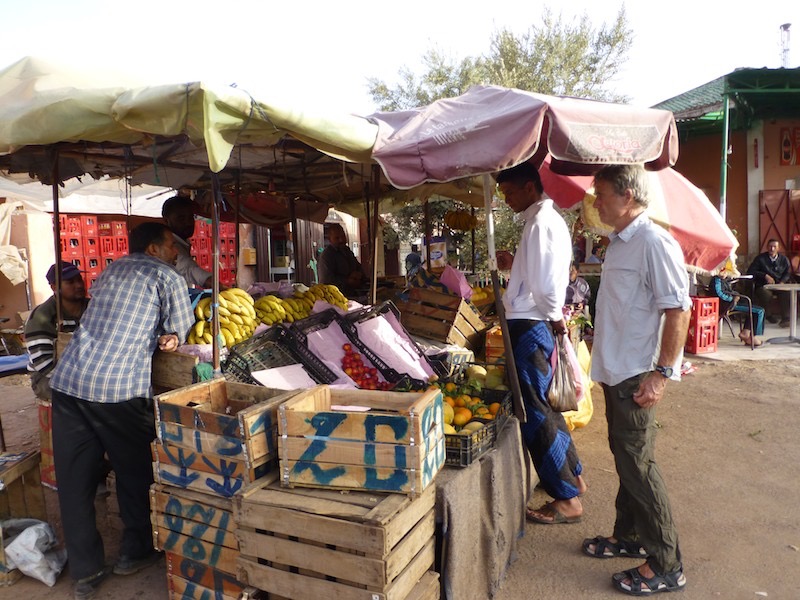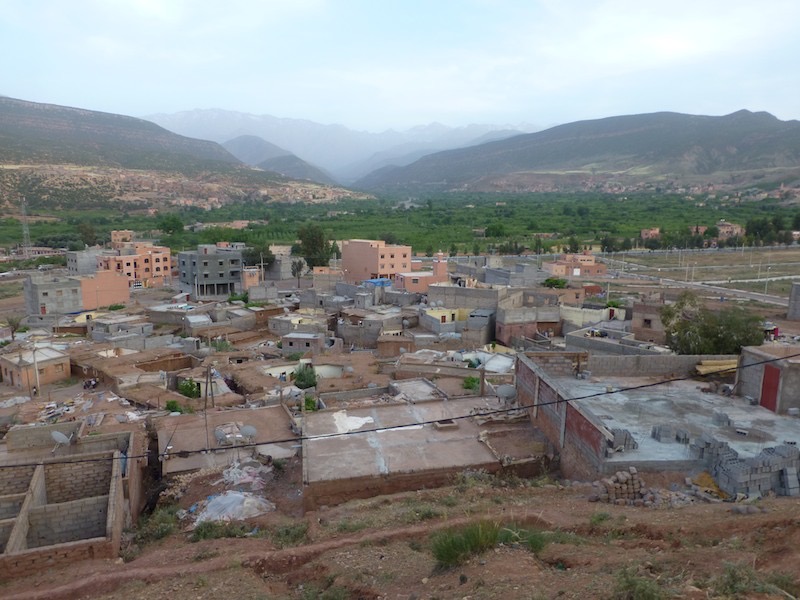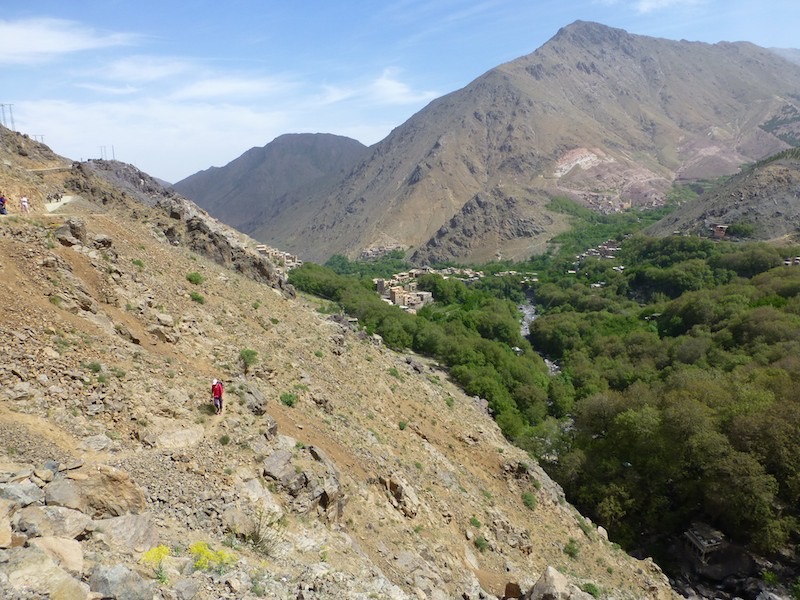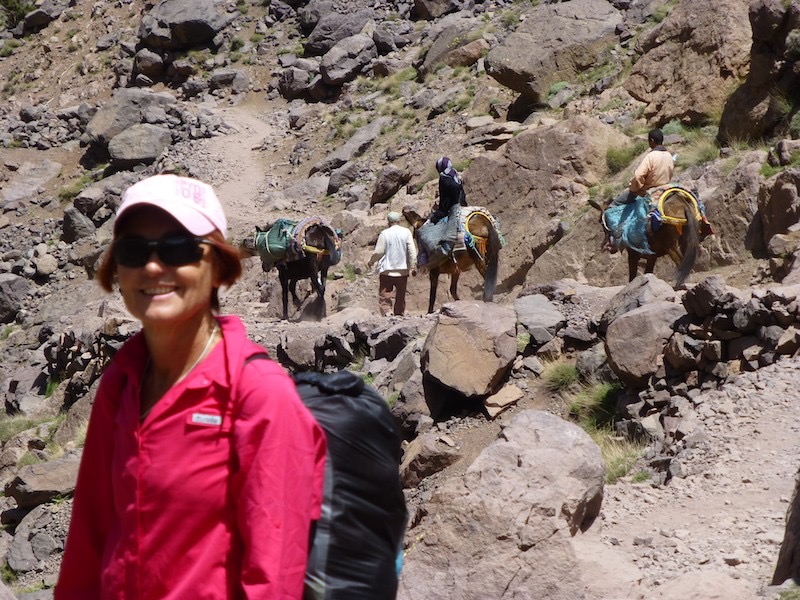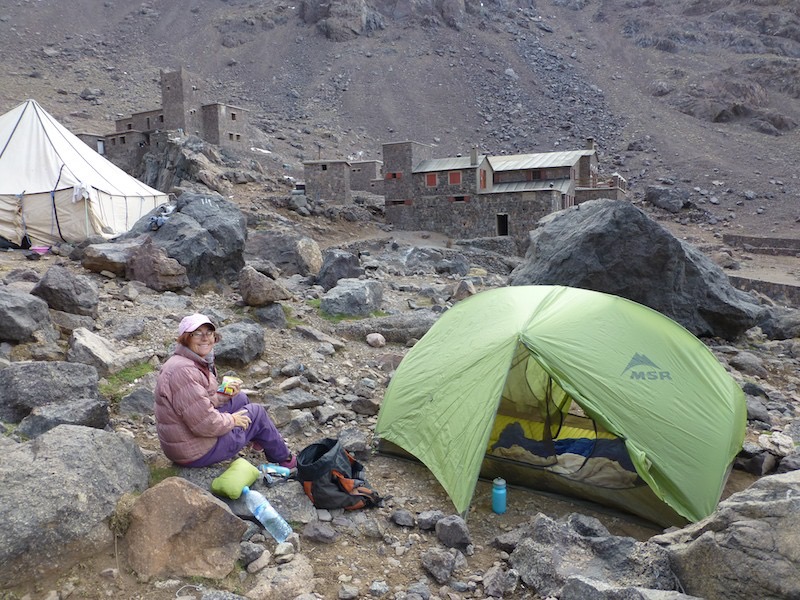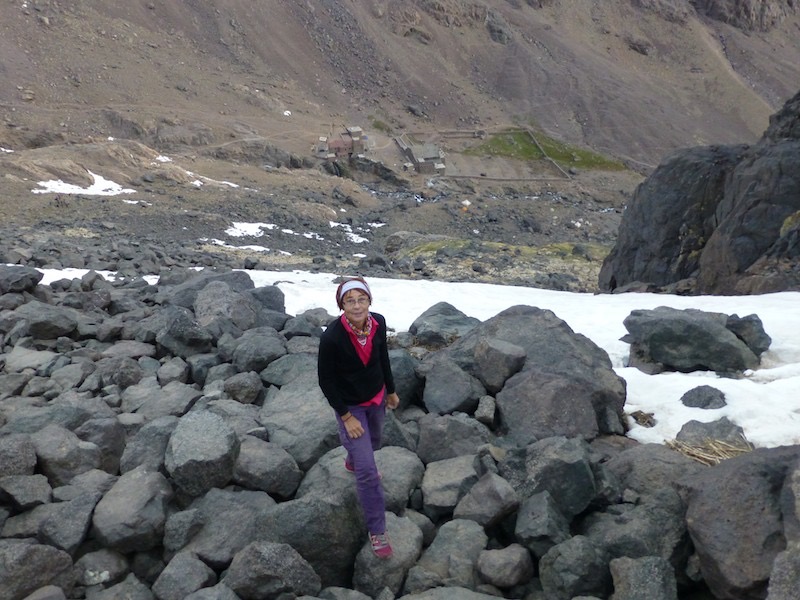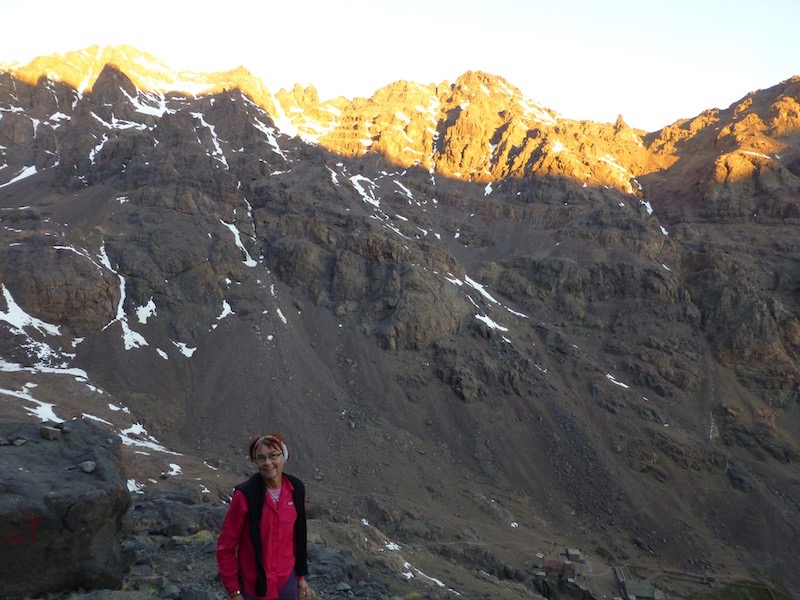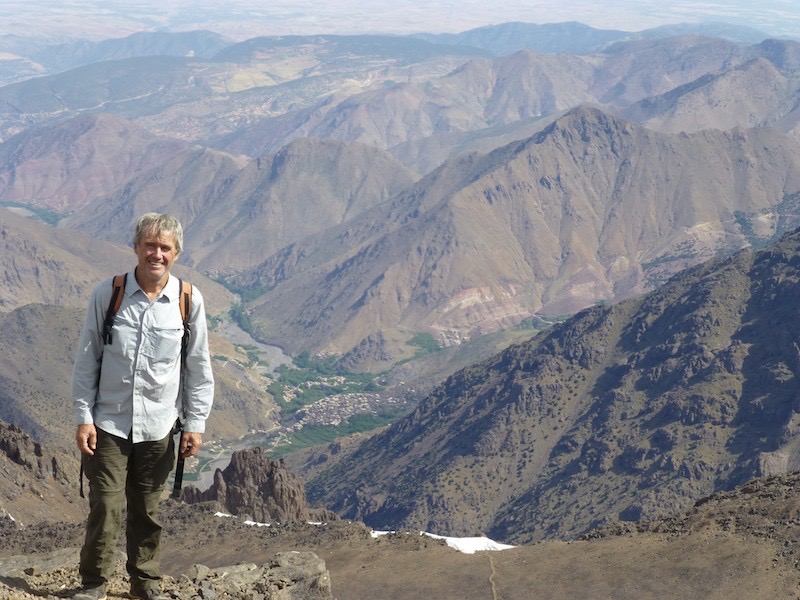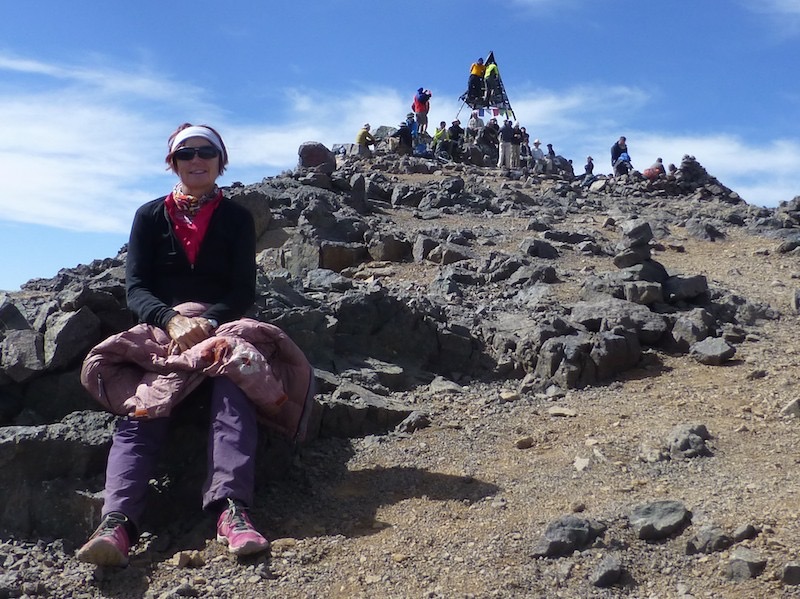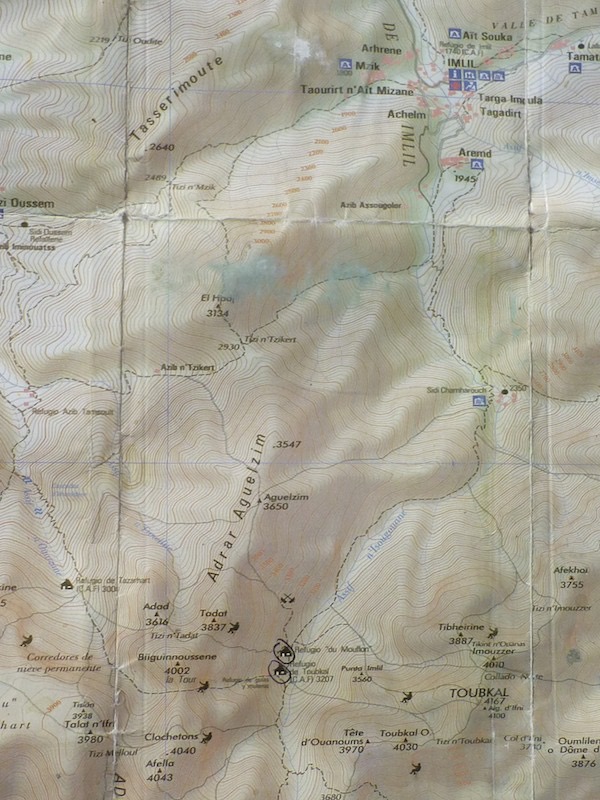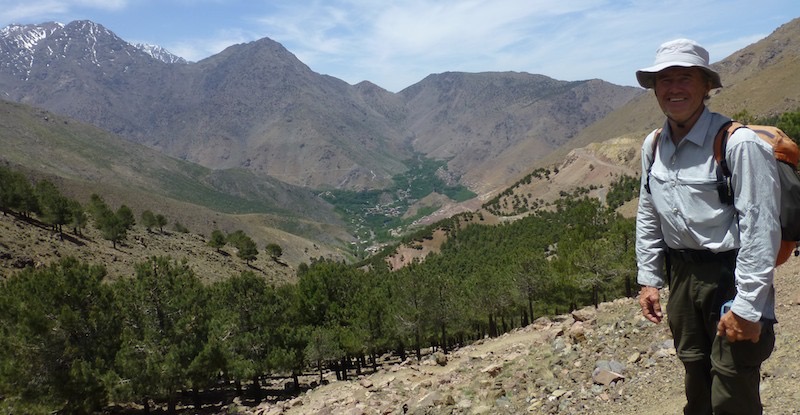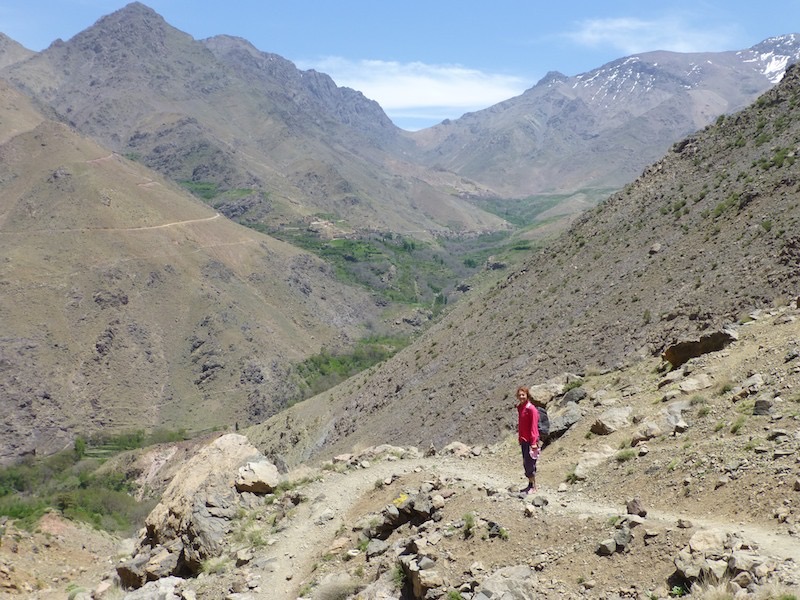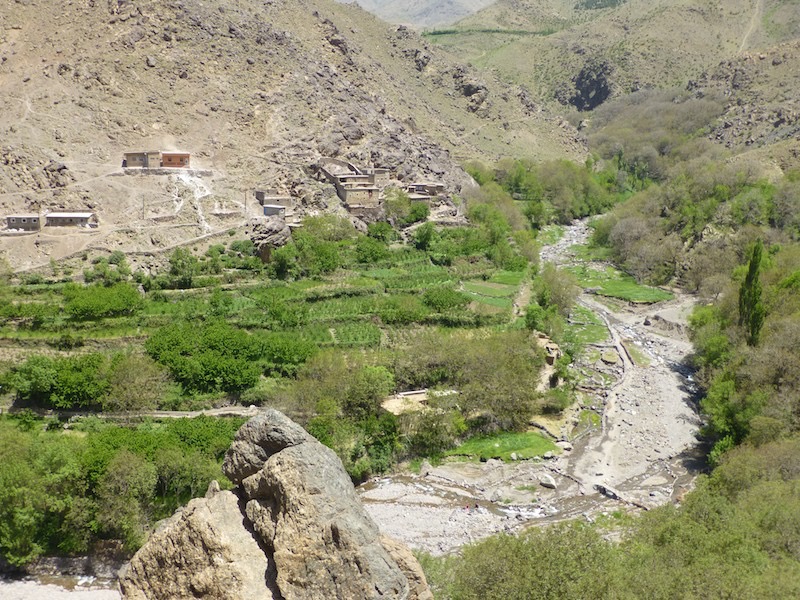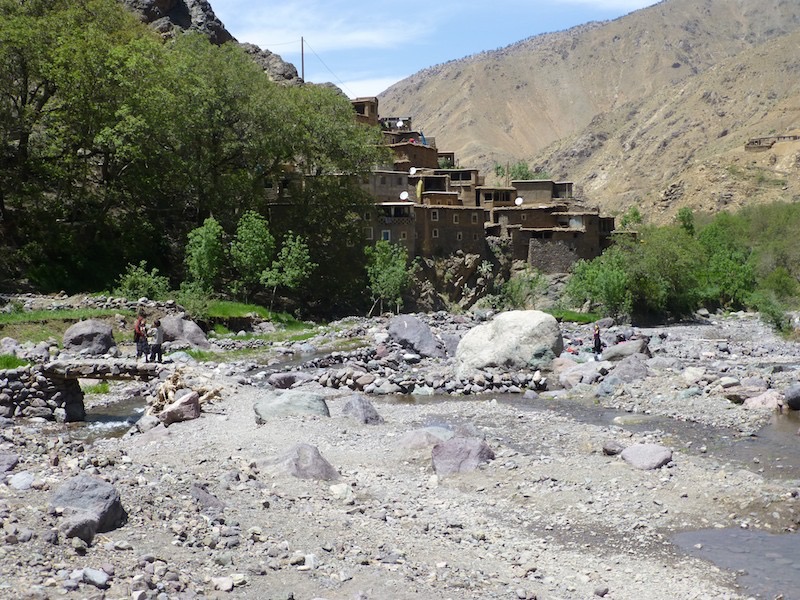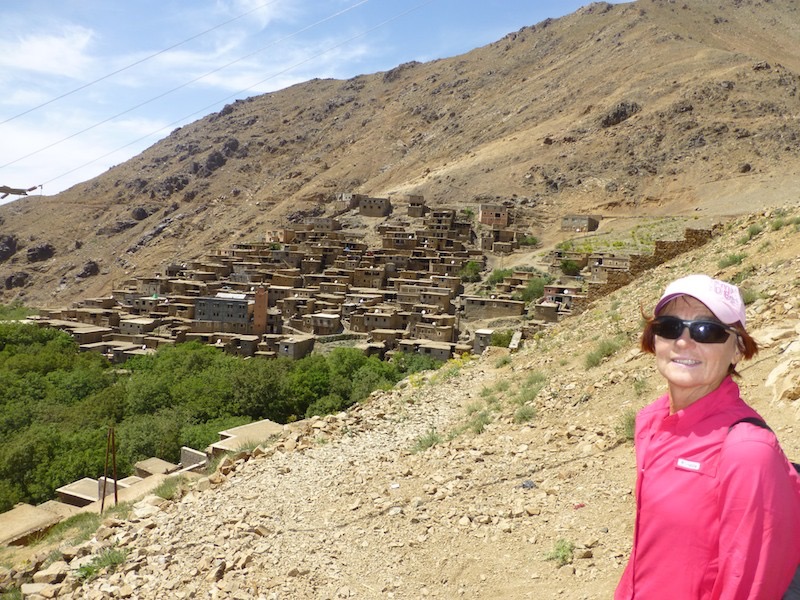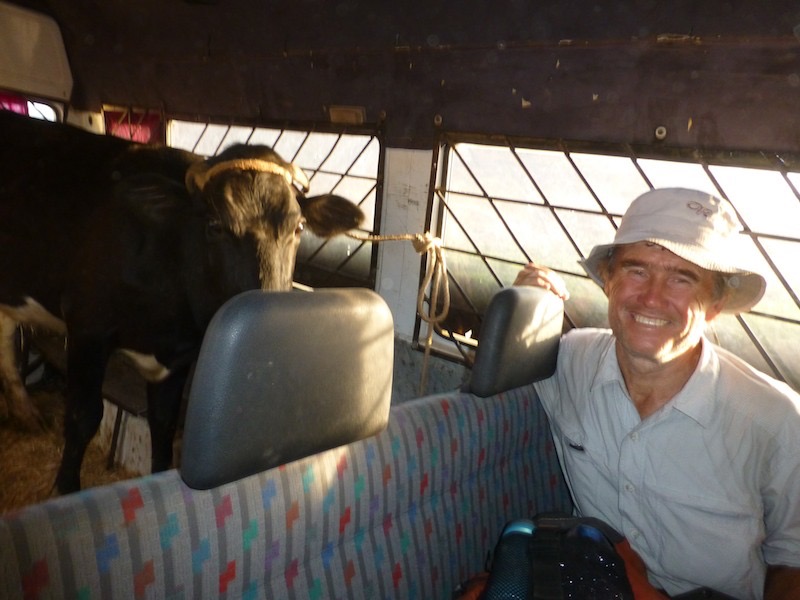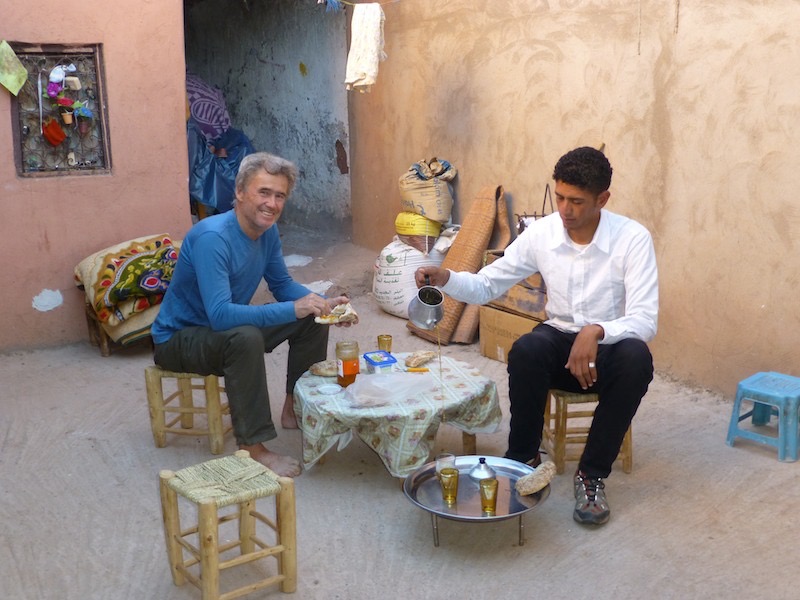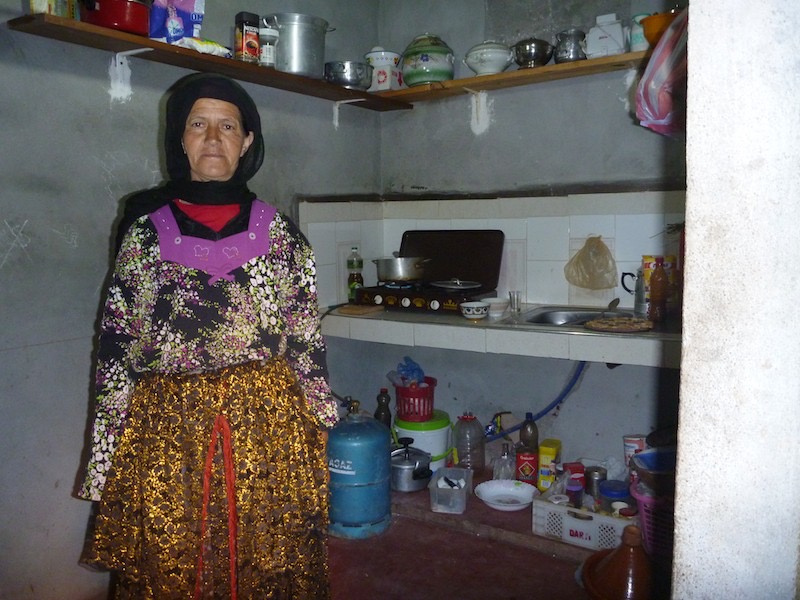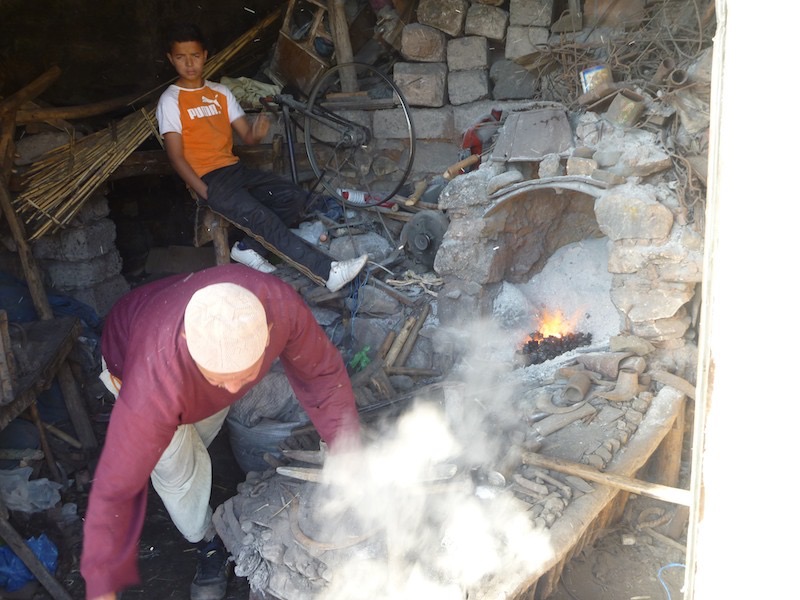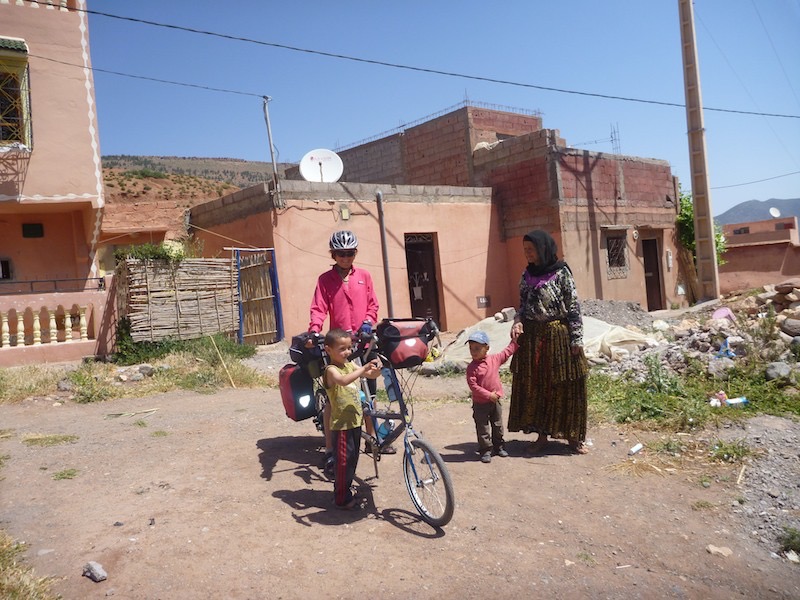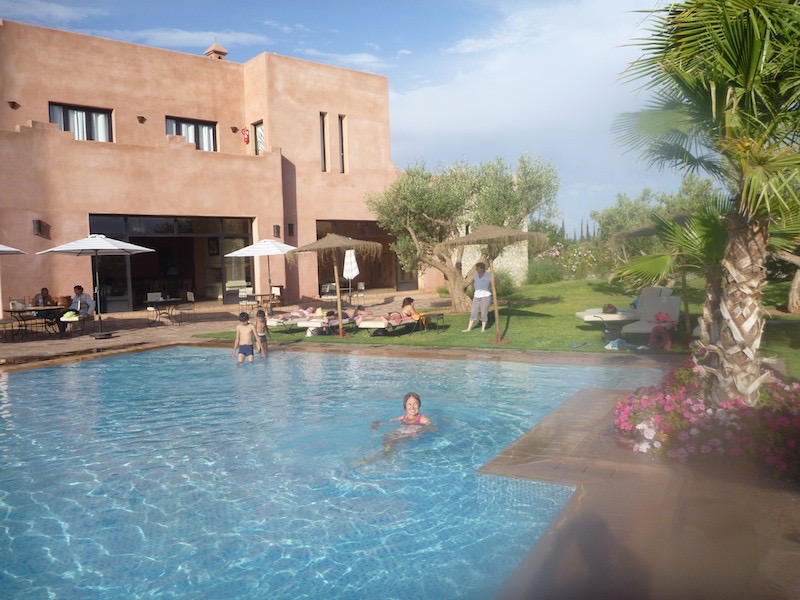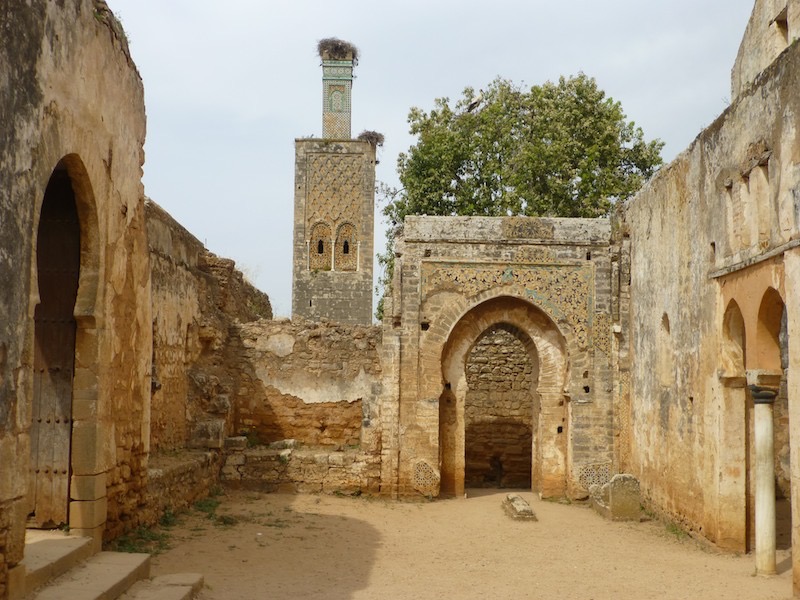Morocco Cycle Touring week 4: High Atlas and, on to Rabat
7th to 13th May 2013: From Marrakesh up to the High Atlas hiking then back to Marrakesh and by train to Rabat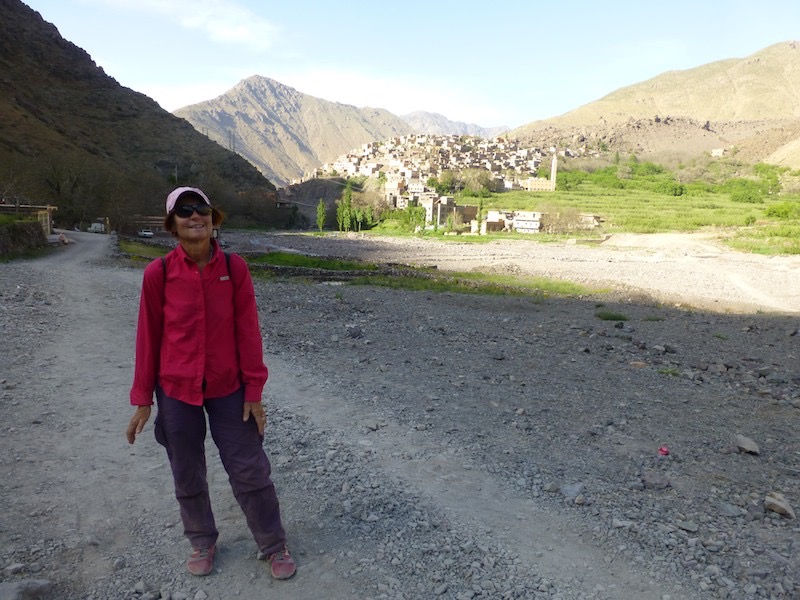
After a very long day with over 12 hours hiking we reached Armed and to our delight we found a guesthouse with camping and gladly stopped for the night. (Omar le Rouge Camping Auberge)
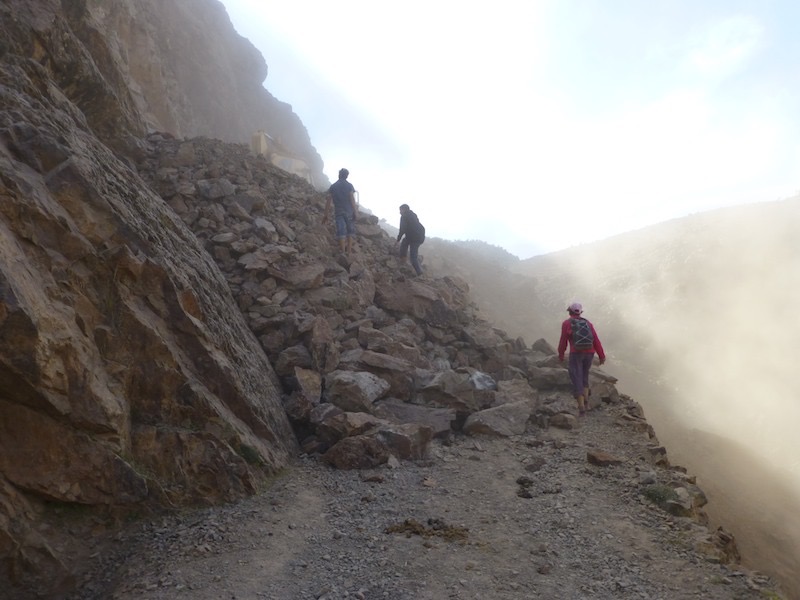
We had a topographical map and thought all would be fine without a guide but when the map showed a road along the river and there aaas none only a climb a few hundred metres to another saddle. Then there was an impasse. Fortunately two boys showed us the way and got the excavator to stop while we passed.

Inside the Medina this was an interesting site.. Stenographers under umbrellas, each with a regular typewriter to type letters in French and an Arabic typewriter, where the carriage went left to right (the opposite way to type right to left). In the background you may pick out a man with a bucket. There were tradesmen, either with buckets of rollers and brushes (painters) or a stand of pipes with a plumbers eel (plumbers) waiting for potential customers.


